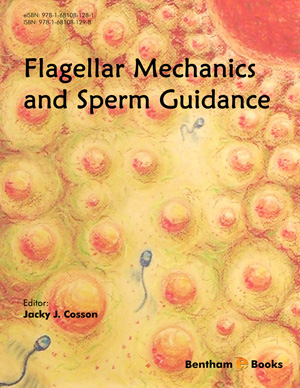Abstract
A variety of broadcast-spawning marine organisms require sophisticated sperm guidance mechanisms, named chemotaxis, to locate the egg and fertilize it. In sea urchins, oocytes release small peptides from the egg outer envelope that bind to their sperm flagellar receptors and trigger a signaling pathway that results in intracellular Ca2+ concentration fluctuations. Each transient Ca2+ increase leads to a momentary elevation of flagellar bending asymmetry which results in a pronounced turn essential for chemotaxis. In addition, this process needs a precise spatiotemporal coordination between the Ca2+-dependent turns, the form of chemoattractant gradient and periods of straighter swimming. Chemotaxis results when spermatozoa are able to undergo Ca2+-dependent turns when swimming down the chemoattractant gradient, while they suppress turning events when swimming up the gradient. This chapter summarizes the sequence of events and known components of the signaling pathway leading to chemotaxis in sea urchin spermatozoa, and the strategies that are being employed to unravel this fascinating and fundamental process.
Keywords: Axoneme, Chemotaxis, Cell-cell communication, Chemoattractant signalling, Calcium signalling, Mathematical modelling of signal transduction, Sperm motility.





